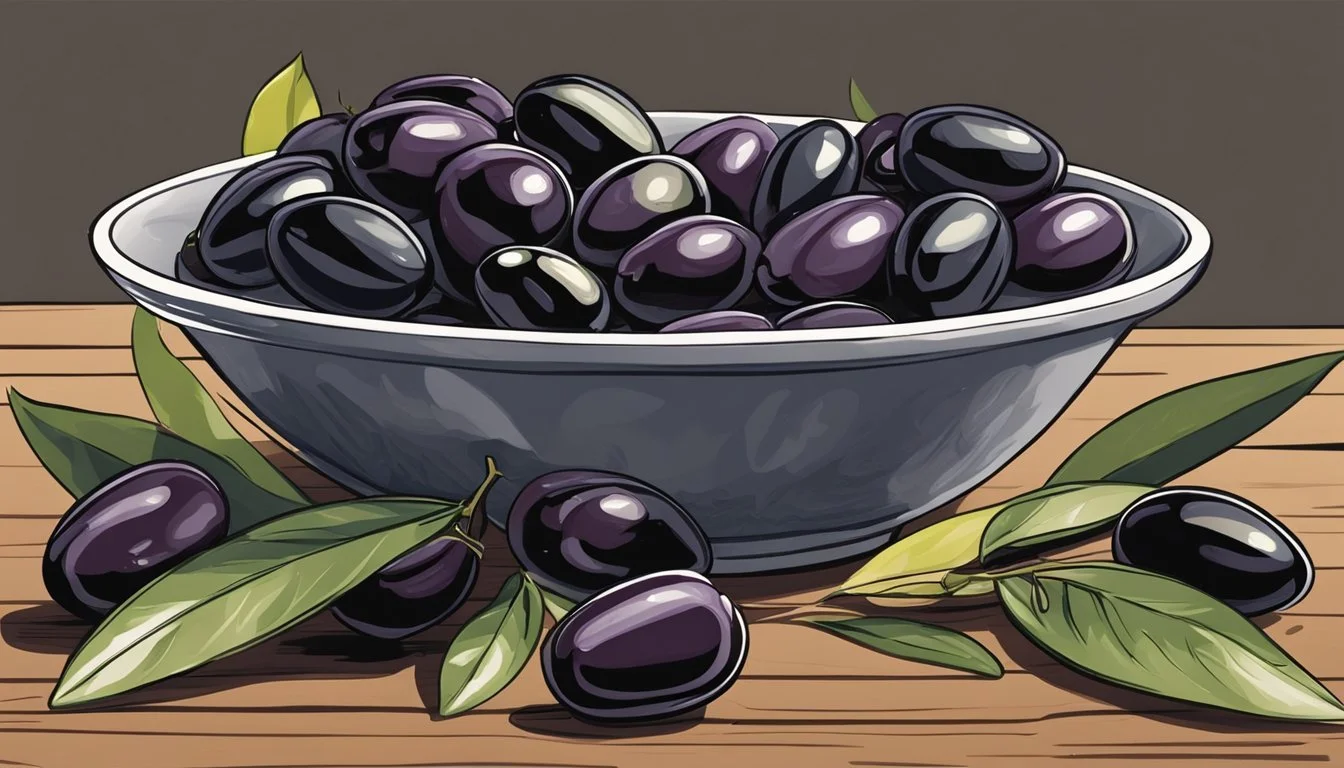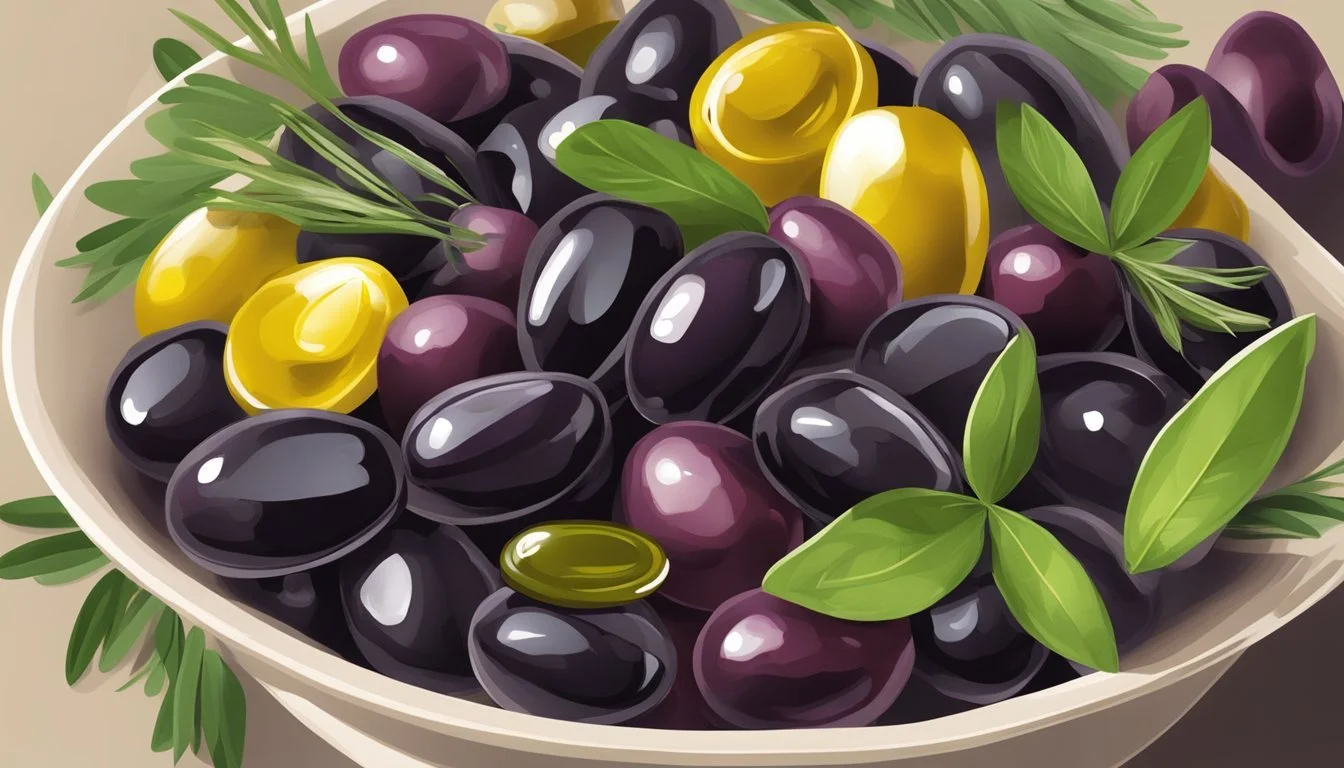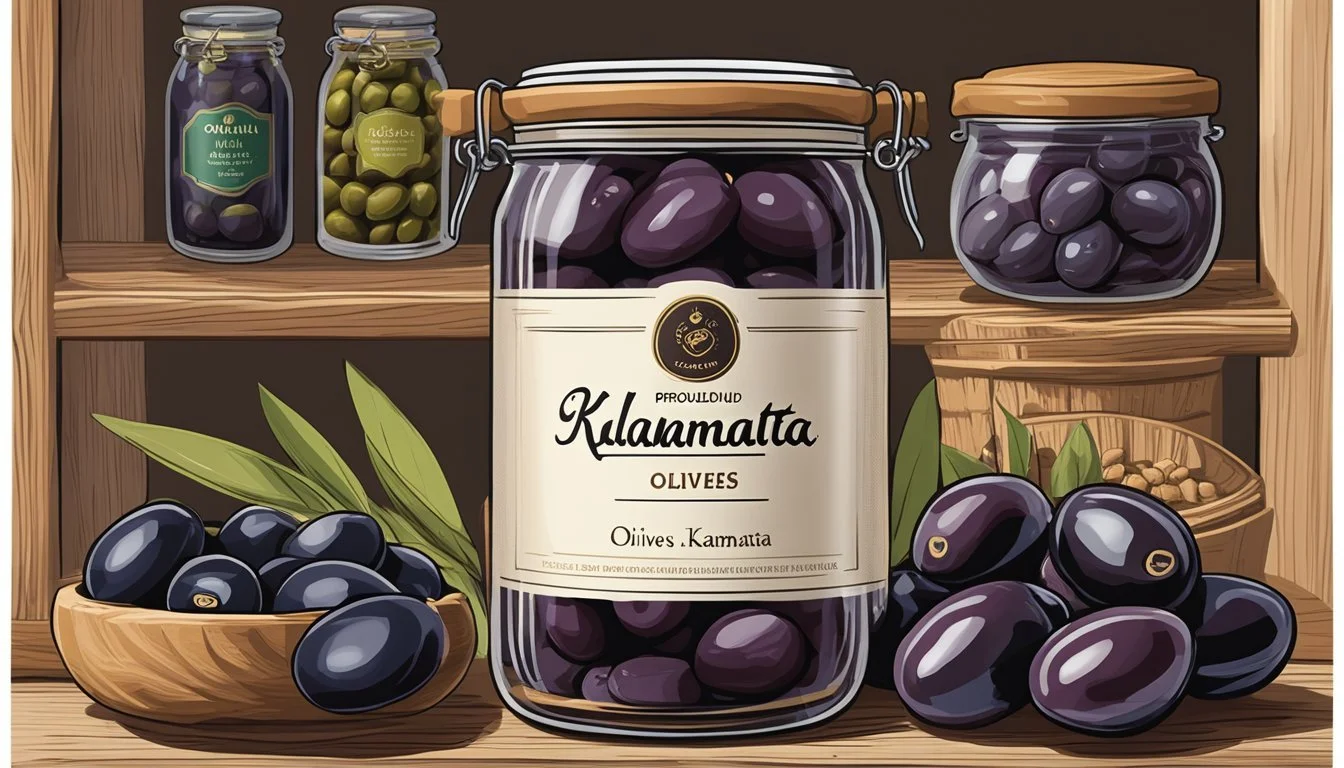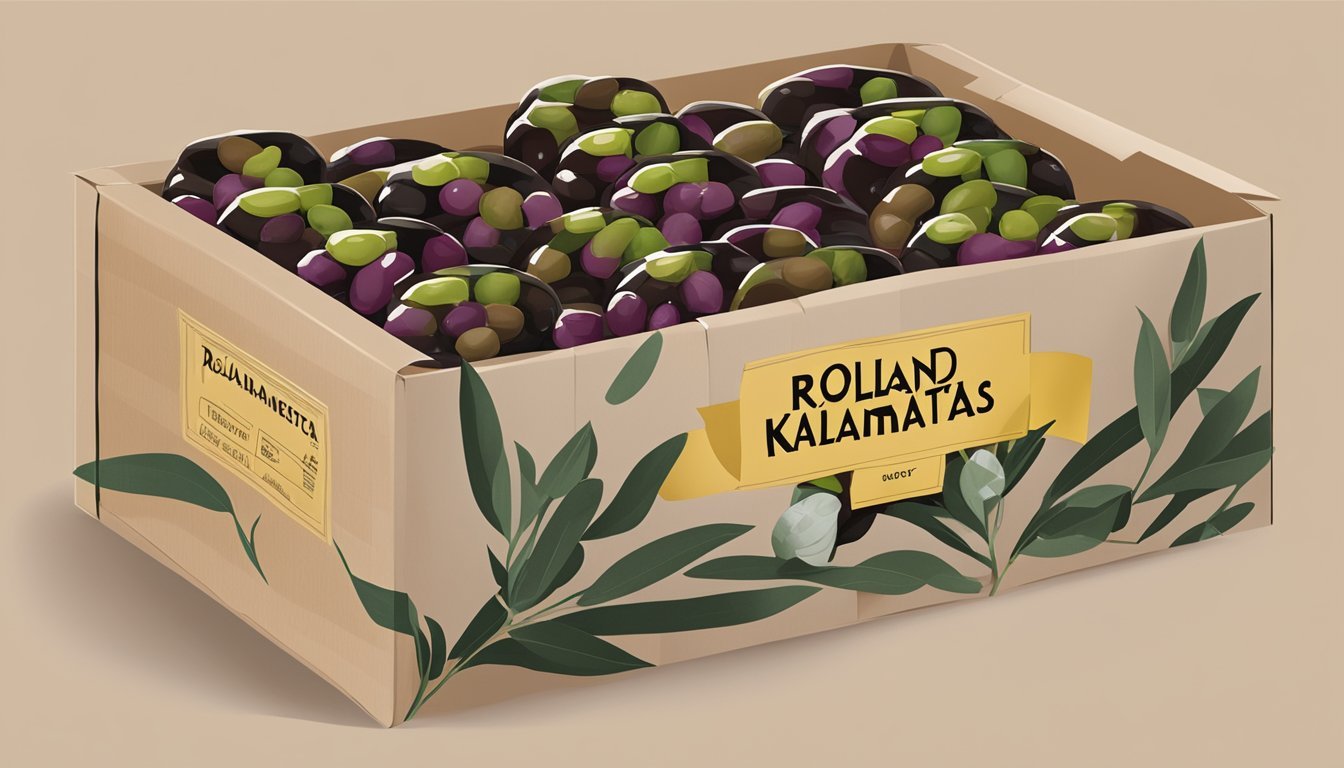Roland Kalamata Olives: Unveiling the Taste of Authentic Mediterranean Cuisine
Roland Foods, seasoned purveyors of fine global ingredients since 1934, has made its mark with the renowned Roland Kalamata Olives. These olives are known for their deep purple color, almond shape, distinctive flavor, and firm texture. Sourced directly from the sun-drenched Kalamata region of Greece, an area celebrated for its agricultural produce and culinary contributions, these olives stand as a testament to the region's heritage.
These olives, whether pitted or whole, are frequently featured in Mediterranean cuisine, not only as a standalone snack but also incorporated into various dishes and appetizers. Roland Foods takes pride in offering a product that is versatile in use. The Kalamata olives can be paired effortlessly with cheeses, meats, and vegetables, or crushed into a tapenade spread over fresh bread, enhancing the flavors of countless recipes.
Embodying a strong and somewhat salty taste, Roland Kalamata Olives bring an authentic Grecian flavor to any table. Their careful selection and packaging process ensures the olives maintain their quality and unique taste profile, reinforcing Roland Foods' reputation for delivering high-quality specialty foods across the globe.
History and Origin
The story of Kalamata olives is deeply rooted in the region from which they hail, accompanied by a rich cultivation history. Roland Foods has embraced this heritage, refining its selection and distribution of these Greek treasures to global markets.
Kalamata Region
The Kalamata olive, distinguished by its dark brown to deep purple color and almond shape, originates from the Kalamata region in the southern Peloponnese of Greece. The area's climate and fertile soil foster the growth of these olives, which bear the name of their geographic origin. This olive variety holds a Protected Designation of Origin (PDO) status, ensuring that only olives from this region can be legitimately labeled as Kalamata.
Roland® Brand Evolution
Roland Foods, established in 1934, has evolved as a reputable importer and distributor of specialty food products. The company's commitment to quality led to the inclusion of Kalamata olives in its product line. Roland® Kalamata Olives are recognized for their firm to medium soft texture and a robust flavor profile, providing an authentic taste of the Mediterranean to consumers worldwide.
Types of Kalamata Olives
Roland Foods offers a variety of Kalamata olives, each bringing a unique texture and flavor profile to the table. Characterized by their deep purple color, these olives possess a meaty texture and a rich, fruity taste that distinguishes them from others.
Whole Kalamata Olives
Whole Kalamata Olives are the original form of this Greek delicacy. They maintain their almond shape and firm texture, providing an authentic experience of this variety's distinct flavor. As whole olives, they also retain the pit, which can impact the intensity of their taste.
Pitted Kalamata Olives
Pitted Kalamata Olives offer convenience without sacrificing the rich, fruity essence that Kalamata olives are known for. Roland's Pitted Kalamata Olives are a testament to this, as they eliminate the presence of pits, allowing for immediate consumption or use in recipes, while maintaining the characteristic deep purple hue and satisfying meaty bite.
Culinary Uses
Roland Kalamata Olives are a dynamic ingredient that enhances a variety of dishes with their rich, briny flavor. These olives impart a distinct taste that pairs well with fresh ingredients as well as heartier recipes.
Pizzas and Bread
Kalamata olives are a favored topping on Mediterranean-style pizzas, contributing a savory depth to the overall flavor profile. They are often coupled with toppings like feta cheese, sun-dried tomatoes, and artichokes. (What wine goes well with artichokes?)
Pizza Toppings: (What wine goes well with pizza toppings?)
Feta cheese
Sun-dried tomatoes
Artichokes
Kalamata olives (sliced or whole)
For bread, incorporating chopped Kalamata olives into the dough creates a moist and flavorful loaf, often complemented by herbs such as rosemary or thyme.
Salads
In salads, Kalamata olives are a staple ingredient that brings a bold contrast to the crisp, fresh vegetables. Their robust flavor pairs exceptionally well with salads that include feta cheese and a Greek dressing.
Salad Components:
Fresh vegetables (tomatoes, cucumbers, onions)
Feta cheese
Greek dressing
Kalamata olives (pitted and sliced)
Hot Recipes
Kalamata olives are also well-suited for hot recipes such as casseroles, stews, and pasta dishes. Their ability to withstand cooking temperatures allows them to retain their distinct taste and contribute to the savory notes of the dish.
Popular Hot Dishes:
Mediterranean pasta (with olives, tomatoes, garlic)
Greek-style lamb stew (with olives, potatoes, and herbs)
Nutritional Information
Roland® Kalamata Olives are characterized by their firm to medium-soft texture and meaty flesh, providing a distinctive eating experience. They are not only a flavorful addition to various dishes but also offer nutritional value that can be included as part of a balanced diet.
In terms of calories, a serving of five Roland® Kalamata Olives (approximately 38 grams) contains about 88 calories. The macronutrient profile includes carbohydrates, proteins, and dietary fibers. Specifically, this serving size delivers around 5 grams of carbohydrates and 3 grams of dietary fiber, which aids in digestion. Additionally, these olives provide 1 gram of protein, contributing to the body's protein requirement.
Roland® Kalamata Olives are noted for being high in fat, but it is primarily the monounsaturated kind, which is considered healthier for the heart. The nutrition content also reports important vitamins and minerals, although specific values are not detailed in the provided information.
It should be noted that while olives are nutritious, they are also somewhat salty due to their brining process. This means consumers should be mindful of their sodium intake, especially if they are managing blood pressure or following a low-sodium diet.
To summarize the nutritional aspects of these olives:
Calories: 88 per 38g serving
Carbs: 5 grams per serving, with 3 grams of fiber
Protein: 1 gram per serving
Fat: High in monounsaturated fats
Sodium: Higher due to brining process
This nutritional profile reflects an olive that can enrich a diet with good fats and fibers, while also being a firm, meaty, and flavorful addition to meals.
Buying Guide
When selecting Roland Kalamata Olives, purchasers should take into account both cost and quality. This buying guide is structured to assist in making an informed decision by highlighting two critical considerations.
Cost Considerations
Budget Constraints: One should consider the budget at hand. Prices can vary based on packaging size and whether the olives are whole, pitted, or sliced.
Price Comparison:
Bulk Purchasing: Often, larger quantities can provide better value per unit.
Promotions: Look out for discounts or promotions that may be offered.
Insider Guide to Quality
Visual Inspection: Quality Kalamata olives exhibit a deep purple to black color and have a smooth, unblemished exterior.
Taste Profile:
Firmness: Quality olives are firm to medium-soft.
Flavor: A balance of saltiness with a robust, distinct taste.
In summary, while assessing the cost, consider the quantity and potential deals. Quality evaluation should be based on the visual and taste profile of the Kalamata olives.
Food Trends and Pairings
In the culinary landscape, Roland Kalamata Olives hold a prominent place with their unmistakable flavor and versatility. This section provides an insight into the trending ways to utilize these olives and the most harmonious food pairings.
Seasonal Selections
The Kalamata olive, a seasonal product, has seen a fruitful harvest in recent times, which impacts its availability and price. They are known for their almond shape, rich deep purple hue, and a distinctive flavor that matures and is harvested typically in the late fall. As trends shift towards sustainable and seasonal eating, Kalamata olives are often featured in autumn and winter dishes, aligning with a global inclination towards more authentic, and traditionally harvested ingredients.
Food Pairings
Kalamata olives exhibit a robust, fruity taste that makes them a strong pairing candidate for various foods. Here is a succinct guide on how to pair Kalamata olives:
Cheeses: Aged cheddar, feta, and goat cheese.
Meats: Salami, prosciutto, and other cured meats.
Vegetables: Pair with crisp cucumbers, tomatoes, or roasted bell peppers.
Dips: Blend into a tapenade or serve alongside hummus.
Table 1: Kalamata Olive Pairings
Food Category Suggested Pairings Cheeses Aged cheddar, feta, goat cheese Meats Salami, prosciutto, cured meats Vegetables Cucumbers, tomatoes, roasted bell peppers Dips Olive tapenade, hummus
Kalamata olives lend themselves particularly well to Mediterranean dishes, enhancing the flavors of Greek salads, pastas, and tapenades. The olive's firm to medium soft texture and saltiness can elevate simple dishes or serve as a key ingredient in more complex recipes.
Storage and Preservation
When it comes to preserving the quality of Roland Pitted Kalamata Olives, proper storage is essential. Unopened jars or bottles of Roland Kalamata Olives should be kept in a cool and dry area, away from direct sunlight—like a pantry. The avoidance of sunlight is crucial as it can lead to faster deterioration.
Once opened, these olives must be promptly refrigerated. To maintain their distinct flavor and firm texture, they should be submerged in their original brine. If additional brine is needed, one can mix equal parts of water and salt to create a simple solution.
Storing in Brine:
Refrigerate after opening.
Keep olives submerged in brine.
Seal container tightly.
For those who prefer other methods, olives can be dry-stored in salt. The salt extracts excess moisture, which helps prevent spoilage. This method is more traditional and can extend the shelf life significantly.
Dry Storage Method:
Rinse olives to remove excess vinegar or brine.
Layer them with salt in an airtight container.
Store in a cool, dry place.
Freezing olives is another viable option for long-term preservation. Prior to freezing, one should blanch the olives to retain their texture and color. After blanching for 2-3 minutes, the olives are rinsed with cold water and then placed in a sealed container suitable for the freezer.
Freezing Instructions:
Blanch for 2-3 minutes.
Rinse with cold water.
Freeze in a sealed container.
By adhering to these storage and preservation methods, Roland Kalamata Olives can retain their distinctive taste and quality for extended enjoyment.
Delivery and Packaging
Roland Foods offers a variety of options for those purchasing Kalamata olives. The company ensures their olives reach consumers with convenience, emphasizing swift and hassle-free delivery services. Availability through online platforms such as Instacart allows customers to receive Roland Foods Kalamata Olives with the possibility of expedited delivery, sometimes in as fast as an hour.
Packaging Options:
Pitted Kalamata Olives are available in sizes suitable for different needs, with bulk options like a 4.4-pound container.
Whole Kalamata Olives can be found in smaller formats, such as a 190-gram bottle, convenient for individual consumers.
Delivery Features:
Contactless Delivery: Roland Foods and its retail partners prioritize the safety of their customers with options such as contactless delivery during the checkout process.
First Order Benefits: New users may find promotions offering free delivery on their first order, incentivizing the trial of Roland Foods products.
Retailer Price Visibility:
Customers can view the pricing of Roland Foods Kalamata Olives directly on different retailers' platforms. This ensures that consumers can make informed decisions based on current market prices.
In terms of packaging quality, Roland ensures that the Kalamata olives, revered for their rich and fruity flavor, are well-preserved. They are packaged in such a manner to maintain their firm to medium soft texture, safeguarding both the olives' quality and taste integrity from the region of Greece they originate from.
Frequently Asked Questions
What regions are Roland® Kalamata Olives from?
Roland® Kalamata Olives are sourced from the Kalamata region of Greece, which is renowned for its rich agricultural tradition and the production of fine foods.
Are Roland Kalamata Olives pitted?
Yes, Roland Foods offers Kalamata olives that are pitted, making them convenient for consumption and inclusion in recipes.
What is the texture and taste of Roland Kalamata Olives?
Roland Kalamata Olives are described as having a firm to medium-soft texture. In terms of taste, they are somewhat salty and possess a strong, distinct flavor that is rich and almost fruity.
Can Roland Kalamata Olives be used in both hot and cold dishes?
Yes, Roland Kalamata Olives are versatile and can be used in various culinary applications, including both warm and cold dishes.
What forms do Roland Kalamata Olives come in?
Roland Foods provides Kalamata Olives in several forms, including:
Whole
Halved
Wedged
Do Roland Kalamata Olives contain essential nutrients?
Kalamata olives are packed with vitamins, minerals, and antioxidants, which are beneficial for health.
What is the color of Roland Kalamata Olives?
The characteristic color of these olives is deep purple to black, aligning with the typical appearance of Kalamata olives.











